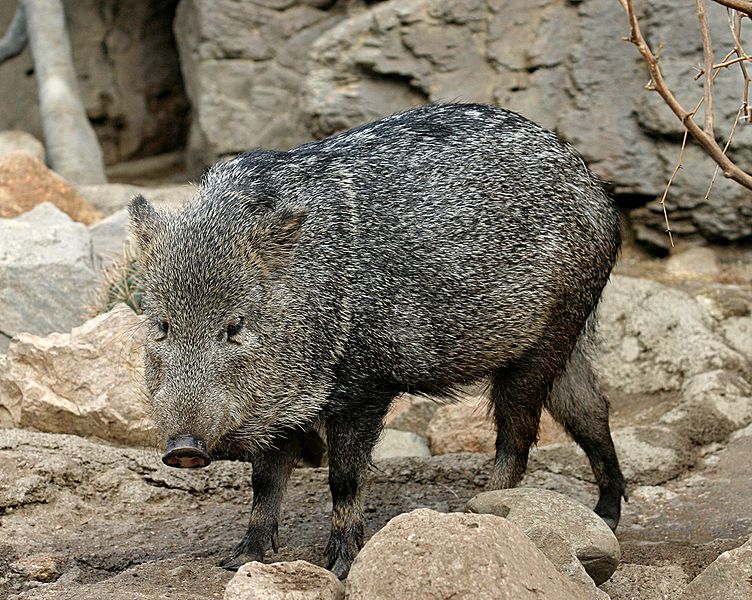 Dutch biologist Marc van Roosmalen has discovered a new species of peccary, a member of the pig family, in the basin of the Rio Aripuanã in the south-eastern Amazon region. The divergence time from the already known peccary species (the time which has passed since the evolutionary division) has been set at one to 1.2 million years.
Dutch biologist Marc van Roosmalen has discovered a new species of peccary, a member of the pig family, in the basin of the Rio Aripuanã in the south-eastern Amazon region. The divergence time from the already known peccary species (the time which has passed since the evolutionary division) has been set at one to 1.2 million years.This species has been christened giant peccary (Pecari maximus) by the researchers on account of its size. The holotype of the species can be found in the museum of the Instituto Nacional de Pesquisas da Amazônia (INPA) in Manaus. The giant peccary was known by the local Tupi Indians as Caitetú Mundè, which means ‘great peccary which lives in pairs’.
Peccaries belong to the pig family from the New World (Tayassuidae). Until recently, the species consisted of three types: the collared peccary, the white-lipped peccary and the Chaccoan peccary. In his contacts with local hunters in area of the Rio Aripuanã basin, Van Roosmalen came across three hides of a species of peccary which he had encountered several times in the local jungle, and which differed strongly from the collared peccary which was also indigenous to the area.
The measurements of the body and the skull confirmed that the new species is larger than the other peccary species. The giant peccary has comparatively longer legs and its fur markings are also completely different. The skull sizes of the giant peccary also appear to differ from the other species. Genetic analysis indicates a divergence time with the collared and white-lipped peccary of between one and 1.2 million years. The giant peccary occurs sympatrically with the white-lipped and collared species, in other words they are found in the same region.
The new species also exhibits very different behaviour from its family members, the white-lipped and collared peccaries. These species are found in large to very large groups (even up to hundreds of individual animals in the case of the white-lipped peccary), while the giant peccary is only found in pairs or in small family groups with one or two offspring. The other peccary types root in the ground for seeds and roots.
The giant peccary eats mainly fruit and exhibits little or no rooting behaviour. The habitat of the giant peccary is limited to terra firme, dry wooded areas, in a small region of the basin of the Rio Aripuanã. The researchers therefore expect the giant peccary population to be small, and they recommend that this new species should be placed on the Red List of threatened species of the International Union for Conservation of Nature and Natural Resources

No comments:
Post a Comment